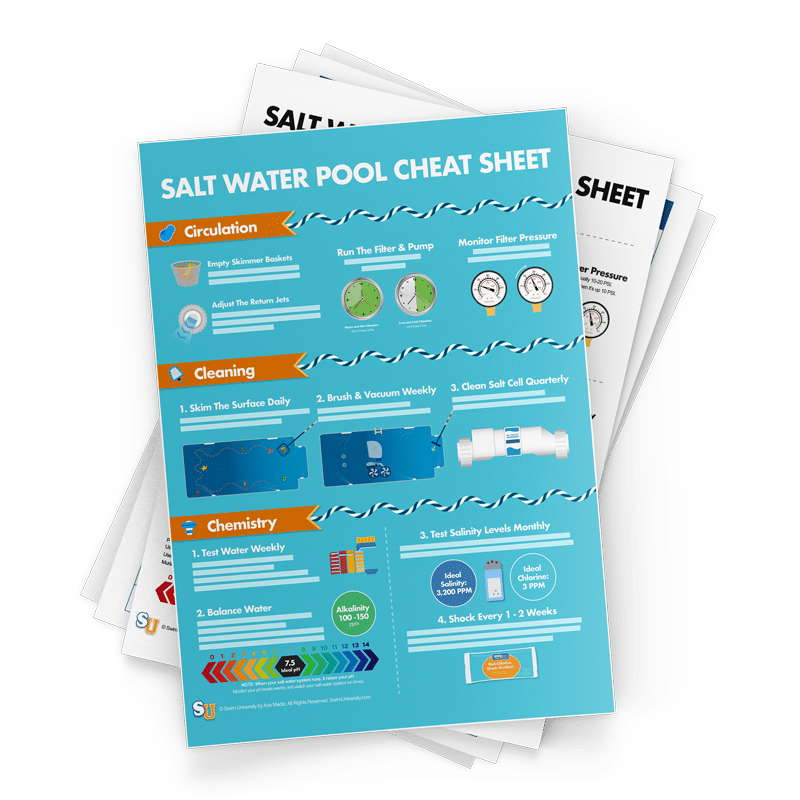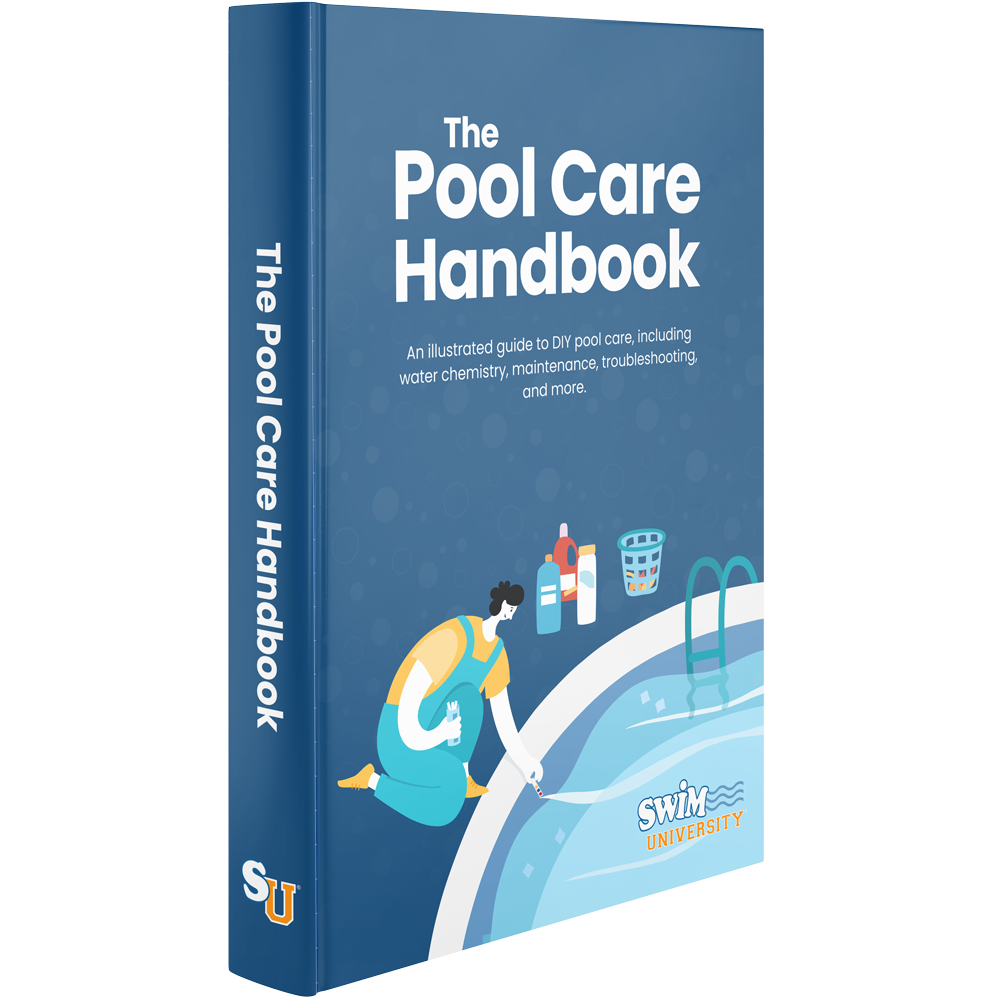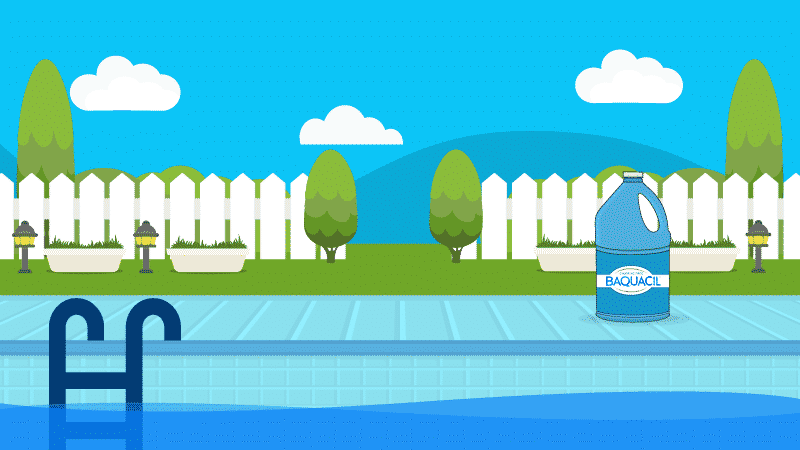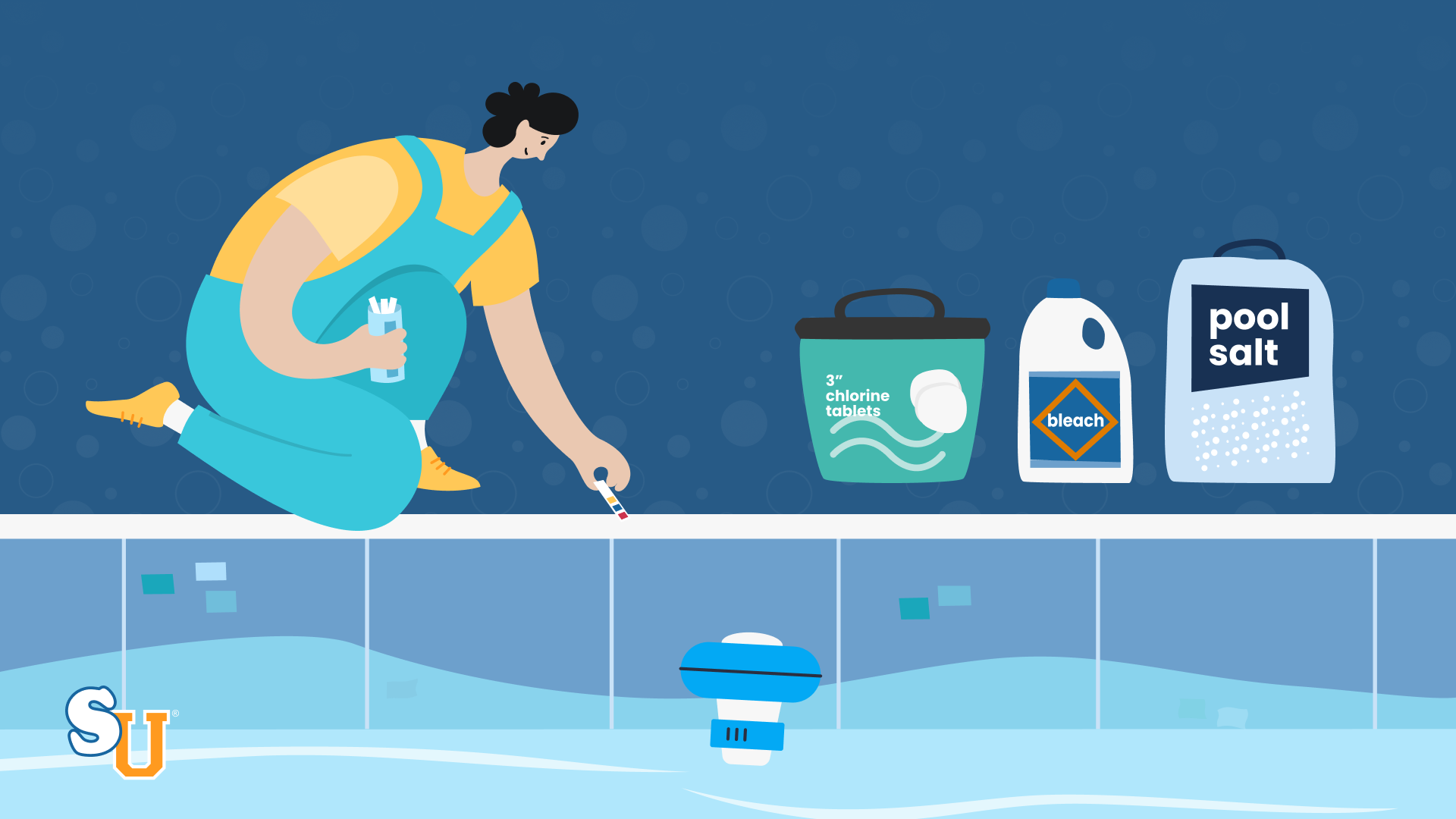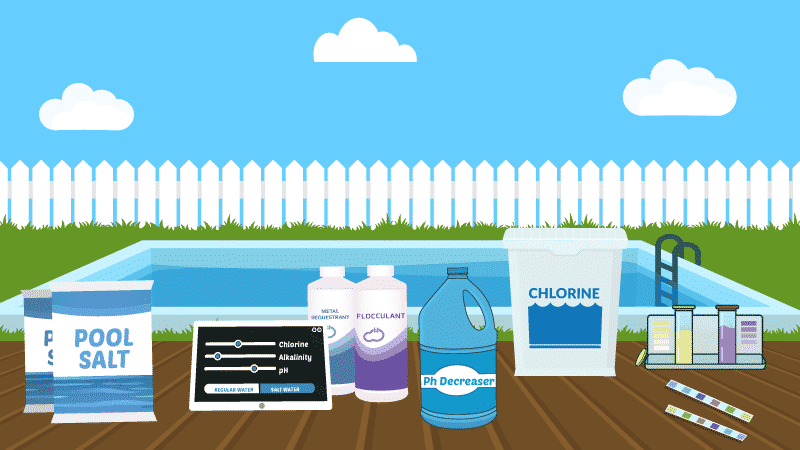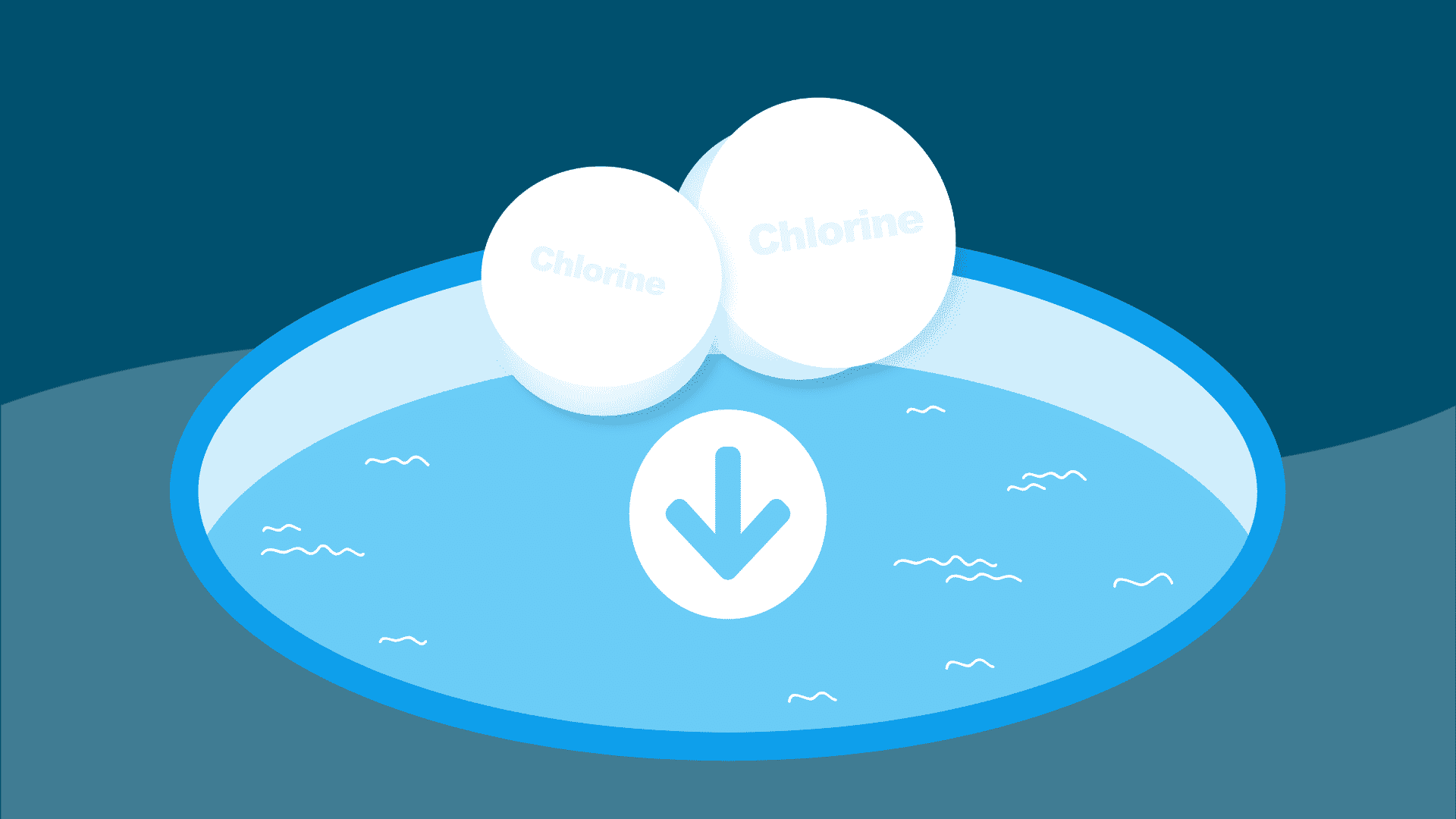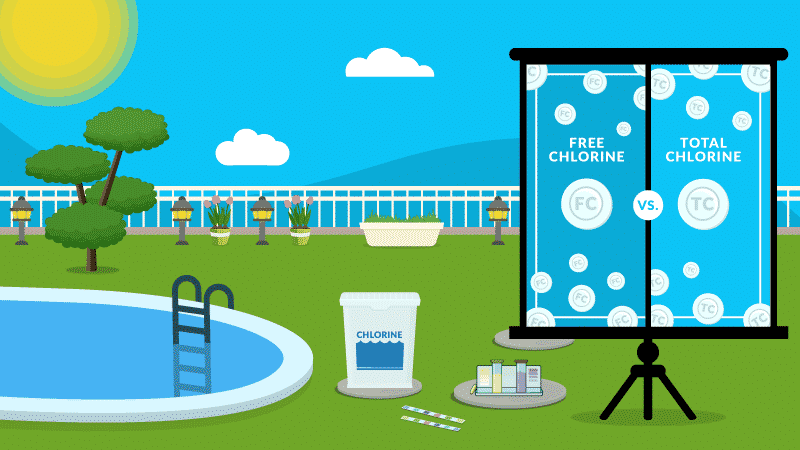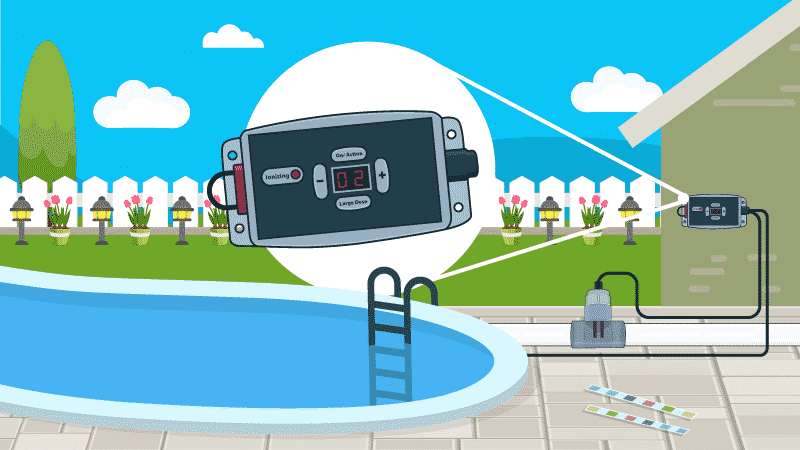How Much Salt to Add to Your Pool (Easy Pool Salt Calculation)
Knowing how much salt to add to your pool is crucial to keeping your saltwater pool chlorinated and your chlorine generator running properly. If your salt levels get too low, your generator won’t produce enough chlorine to keep your pool sanitized—or it’ll stop running altogether. But if your salinity gets too high, you risk damaging your pool’s equipment and surfaces.
The ideal salt level for a pool is around 3,200 PPM. If you start with no salt (0 PPM) and have a 10,000-gallon pool, you’ll need to add 267 pounds of salt. That’s six to seven 40-pound pool-grade bags of salt.
Here’s a quick table to help you calculate how much salt you need to add to your pool based on your pool volume and current salt levels.
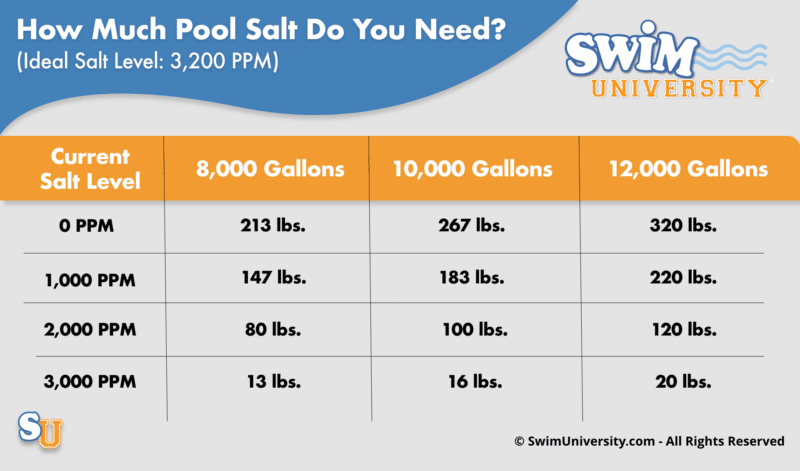
Check out our quick video tutorial for more help, or keep reading for the rest of the guide on how much salt to add to your pool.
What’s the Correct Level of Salt for Your Pool?
The ideal salt level is between 2,700 to 3,400 ppm with the optimal level being 3,200 ppm. Once you add the initial amount of salt to your water (either when you fill your pool or at the start of the season), you likely won’t need any additional salt. That’s because your salt water generator continuously uses the salt to generate chlorine (thanks to electrolysis). Then the chlorine sanitizes your pool. The salt does not evaporate but it does get diluted when it rains or if you add fresh water.
If you’re converting to a salt water system for the first time, you’ll need about six or seven 40-pound bags of pool salt (for a 10,000-gallon pool). On the other hand, if your salt levels are just low (around 1,000 PPM), you’ll only need about four or five 40-pound bags of pool-grade salt.
Professional Pool Salt crystallizes early to match the fastest dissolve rates on the market - no more waiting for hours for chlorine tablets to dissolve and produce beautiful clean water.
Luckily, pool salt is relatively inexpensive. And as mentioned, once you add it at the beginning of the season, it should stay in your water. And you can always add more salt if you need to. So start slowly and let the salt circulate and dissolve. Then retest your salt levels.
Stop wasting time and money with confusing water chemistry and maintenance. Our effortless system guarantees to keep your pool balanced, sanitized, and crystal clear all year. Works for all pools including saltwater.
How to Test Your Current Pool Salt Levels
Before you can figure out how much salt to add to your swimming pool, you’ll need to know your current salinity levels. Your salt water generator should tell you what your current salt level is. So start by checking the digital display to get a salinity reading.
However, sometimes a salt water generator can give you an inaccurate salt reading. This may be the case if your unit needs to be recalibrated, or if your water temperature is too low. Funny enough, lower water temperatures produce lower salt readings.
You may also experience inaccurate readings if you have high total dissolved solids (TDS) because of other minerals in the water. Or your salt sensor may also need cleaning.
So to verify how much salt is in your water, use one of these manual testing methods at least once a month.
Digital Salinity Tester
This Digital Salinity Tester is an accurate, easy way to verify the salt levels in your pool. Simply place the tester in your pool water for a digital salinity reading.
A digital salinity tester is the most accurate way to test your salt levels. Simply place your digital tester directly in your pool water. Beyond testing for salinity, most digital testers also measure total dissolved solids (TDS) total hardness.
Salt Test Strips
With most salt water test strips, simply dip the test strip in a pool water sample and wait several minutes for the results. While this isn’t as accurate as a digital tester, it’s a cheap way to get an approximate reading.
These salt test strips are designed for measuring sodium chloride levels from 400 to 7,000 ppm. They provide accuracy comparable to liquid tests without the hassle of measuring and counting drops.
Liquid Reagent Kit
You can get a liquid test kit that includes salt water readings. Simply fill the included vials with pool water from your pool. Add the reagent according to the manufacturer’s instructions. Once mixed, the samples change color.
How to Calculate How Much Salt to Add to Your Pool
Use this formula to determine how much salt you need to add to your pool. This assumes your salt levels should be around 3,200 PPM:
How Much Salt to Add (In Pounds) = Your Pool Water in Gallons x 8.35 x (0.0032 – Current Salt PPM / 1,000,000)
For example, if you have a 12,000-gallon pool and your current salt PPM is 1,200 PPM, your math should look like this:
- 12,000 x 8.35 x (0.0032 -1,200/1,000,000)
- 12,000 x 8.35 x (0.0032 – 0.0012)
- 12,000 x 8.35 x 0.0020 = 200.4 pounds
That means you need to add about 200 pounds of salt to the pool water to bring your salt levels up to 3,200 PPM. Generally, pool salt comes in 40-pound bags, so you’d need 5 bags of salt to get the 200 pounds you need.
How to Add Salt to Your Pool
Before adding salt to your pool, whether it’s your first time using salt or it’s part of regular pool maintenance, test your water levels. Make sure your alkalinity and pH are balanced before adding salt.
You’ll also want to buy pool-grade salt that’s at least 99.8% pure sodium chloride (NaCl). It should be evaporated, food-grade, granulated, non-iodized salt. And make sure it does not contain anti-caking agents because they can discolor pool surface finishes and fittings.
Turn off your salt chlorine generator. But leave your pump and filter on to circulate the water, which will help dissolve the salt.
Add the salt to the shallow end or around the perimeter. Do not pour the salt directly into the skimmer. Then, let it dissolve and circulate. Depending on how fine the salt is, it could take up to 24 hours to completely dissolve.
Once the salt has dissolved, turn on your salt chlorinator. Test the water to make sure you have a salt level of around 3,200 PPM. Levels much lower than that will make your generator less effective and produce less chlorine. But levels higher than 4,500 PPM will reduce the lifespan of your salt cell and can cause erosion and damage to your pool surfaces and equipment.
Remember, you likely only need to add salt to your pool once a year at the beginning of the pool season. Or add salt to replace lost salt from splashout, backwashing or rain. If you ever have to completely drain and refill your pool, you’ll need to completely replace all the pool salt.
This is the ultimate guide to keeping your pool sparkling clean throughout the year that contains everything you need to know about taking care of your pool the right way. Including saltwater pools.
Frequently Asked Questions About Pool Salt
Need more help with adding salt to your pool? Check out our guide on Salt Water Pool Maintenance 101. And here are some frequent questions and answers.
How do you calculate pool volume?
The volume of a rectangular pool is calculated by taking the length x width x average depth. For other shapes or pools with varying depths, you can calculate your pool volume (in gallons) with our Pool Volume Calculator.
How many bags of salt do I need for my pool?
It depends on your current salt level and your pool size. Let’s say your above ground pool has 10,000 gallons of water and you need to raise your salt level from 0 to 3,200 PPM because you’re starting with fresh water or a new salt system. You will need 200 pounds of pool salt or about five 40-pound bags. The salt will stay in the water, so you will only need to add a bit more every year to replace the salt you lose to splashout and backwashing.
How many bags of salt do I need for my 15,000-gallon pool?
If you’re starting with no salt, you’ll need about 300 pounds of salt for 15,000 gallons of water. Since pool salt comes in 40-pound bags, you will need a little less than 8 bags.
Can you put too much salt in a pool?
Adding a bit more salt to your pool won’t typically cause any issues. If the excessive salt levels reach 5,000 ppm or more, you could cause corrosion of metal equipment in the pool.
What else do I need to add to my pool besides salt?
In addition to salt, you’ll want to test and balance your pH, alkalinity, and cyanuric acid levels regularly. You should also manually test your chlorine levels and salt levels, just in case your salt water system isn’t measuring chlorine production correctly. This is why regular water testing is important.
3 Ways We Can Help With Your Pool
- The Pool Care Handbook: An illustrated guide to DIY pool care, including water chemistry, maintenance, troubleshooting, and more.
- The Pool Care Video Course: You’ll get 30+ step-by-step videos and a downloadable guide with everything you need to know about pool maintenance.
- The Pool Care App: Enter your water test results. Get a custom treatment plan. Know exactly what chemicals to add to keep your pool clear.
